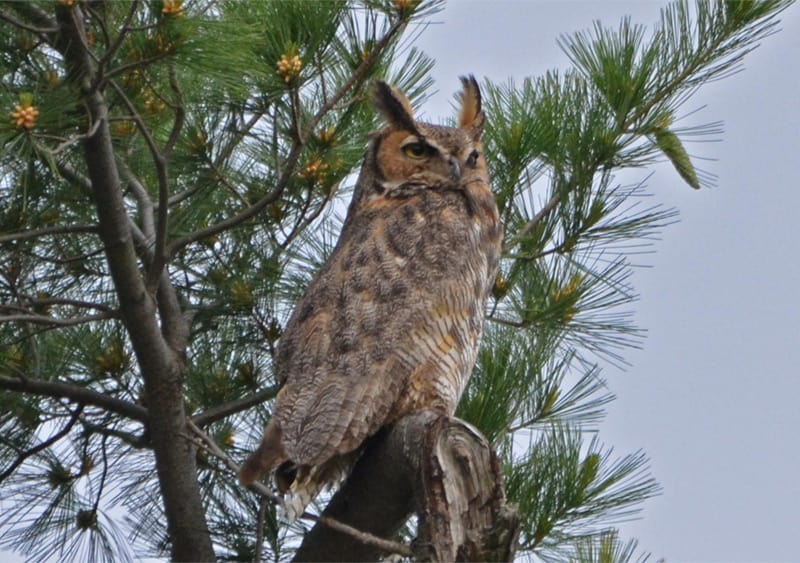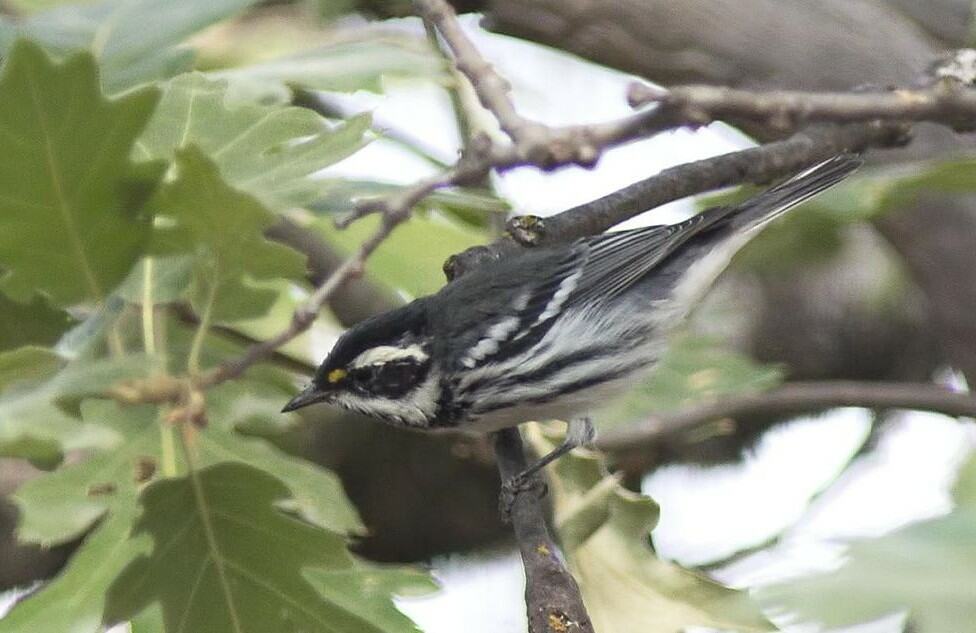Huge, powerful, and widespread across North America, the great horned is the king of all of our owls. The great horned owl is named for its large size (up to 24 inches tall, with a wingspan of 44 inches) and its long feathered head tufts (horns).
A deep rusty brown and buff overall, this owl has large, golden-yellow eyes. Its thick, soft feathers provide excellent insulation from either heat or cold, permitting the great horned to nest as soon as early to midwinter even in regions with harsh winter weather.
Listen for
The deep, booming call of the great horned—whoo-who-o-o-o- who-who—a staple of movie and television soundtracks, is most often heard in nature just after sunset. Great Horneds begin courtship calling in midwinter, so this is a good time to listen for their far-carrying calls.
Find it
A non-migratory bird throughout the Americas, great horned owls can be found as far north as the tree line, and as far south as South America—and in nearly every conceivable habitat and setting. Great horned owls are equally at home in urban and suburban settings, as well as in deep woodlands, grasslands, and deserts.
Feed it
Armed with incredible vision, the great horned owl sees and pounces on prey, using its powerful talons and bill to dispatch its victim. Mammals (rabbits, hares, and large rodents) are the primary prey item of great horned owls. They also eat earthworms, fish, snakes, and even birds as large as great blue herons.
They are one of the few predators that will readily kill and consume skunks. Within a great horned owl’s territory, it’s unusual to find other, smaller owls—they may have been eaten by the resident great horneds. Their primary hunting mode is to perch, watch, and pounce on prey.
Nesting Behavior
Great horned owls most often take over an old stick nest built by a hawk, heron, or squirrel, but they will also nest on cliff ledges, in tree cavities, and even on the ground. Two to four eggs are laid and incubation by the female lasts slightly more than a month.
The male brings food to his mate on the nest each night. Six weeks or so after hatching, the young owlets venture from the nest to nearby branches. They remain dependent on the adults for many months, but leave the nest area before the next breeding season.
WOW!
Although the female is larger than the male, he has a deeper voice and more complex call. If you hear two Great Horneds calling to each other, the voice with the deeper, lower notes belongs to the male.





i hear and see a bunch of of owls at the comite river trails. the small ones may be screech owls.